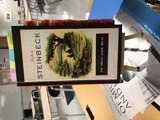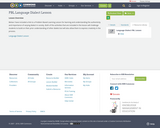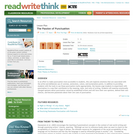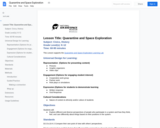
Youth worldwide are in danger due to small arms and conventional weapons. How do we, as youth, participate in the global debate on gun control?
- Subject:
- Arts and Humanities
- Social Science
- Material Type:
- Lesson Plan
- Date Added:
- 04/04/2014

Youth worldwide are in danger due to small arms and conventional weapons. How do we, as youth, participate in the global debate on gun control?

In this module, students read, discuss, and analyze nonfiction and dramatic texts, focusing on how the authors convey and develop central ideas concerning imbalance, disorder, tragedy, mortality, and fate.
Find the rest of the EngageNY ELA resources at https://archive.org/details/engageny-ela-archive .

In this module, students will read, discuss, and analyze contemporary and classic texts, focusing on how complex characters develop through interactions with one another and how authors structure text to accomplish that development. There will be a strong emphasis on reading closely and responding to text dependent questions, annotating text, and developing academic vocabulary in context.
Find the rest of the EngageNY ELA resources at https://archive.org/details/engageny-ela-archive .

In this module, students engage with literature and nonfiction texts that develop central ideas of guilt, obsession, and madness, among others. Building on work with evidence-based analysis and debate in Module 1, students will produce evidence-based claims to analyze the development of central ideas and text structure. Students will develop and strengthen their writing by revising and editing, and refine their speaking and listening skills through discussion-based assessments.
Find the rest of the EngageNY ELA resources at https://archive.org/details/engageny-ela-archive .

This is the first lesson in a week-long, mini-unit contains four individual lessons. Through the course of all these lessons, students will be introduced to the concept of civil disobedience—people purposefully disobeying a law or protesting nonviolently about laws or social issues they feel to be unjust. They’ll read from, watch, and listen to three examples that address the issue: Henry David Thoreau’s “Civil Disobedience," Dr. Martin Luther King, Jr.’s “Letter from a Birmingham Jail," and the Teaching Tolerance documentary Viva La Causa written and directed by Bill Brummel.Activity Description: This lesson focuses on introducing, defining, and providing a basic example of historical civil disobedience using Henry David Thoreau's experience and an excerpt from his essay "On the Duty of Civil Disobedience."This lesson is designed to be used in a blended environment. Accommodations are listed for non-blended courses.Time needed for activity: ~45 minute class periodResources needed: Online discussion board(s) set up at either pinup.com or answergarden.ch; copies of the "On the Duty of Civil Disobedience" excerpt (printed or electronic)

Activity Description: This activity is actually three different discussion-based activities to be used in a station rotation discussion day format. It does require some prework with the double journal note-taking graphic organizer included in the resources. This station rotation discussion format could be used with each chapter, a grouping of chapters, or at the end of the book. If you are encompassing the entire book, this activity will most likely take several days.Time needed for activity: 30-45 (10ish minutes per station)Resources needed for activity: student notes using the double journal note-taking graphic organizer (linked here and as a PDF in the resources) paper for timelines or internet access to https://time.graphics/ or another online timeline maker, internet access to an online discussion tool like https://pinup.com/ or a discussion forum on your LMS.Assessment strategies: See the attached rubrics for possible assessment methods.

Below I have included a link to a Problem Based Learning Lesson for learning and understanding the authenticity and importance of varying dialect in society. Both of the acitivities that are included in the lesson will challenge students to build on their prior understanding of other dialets but will also allow them to express creativity in the process. Language Dialect Lesson

Using published writers' texts and students' own writing, this unit explores emotions that are associated with the artful and deliberate use of commas, semicolons, colons, and exclamation points (end-stop marks of punctuation).

This lesson explores quarantine and space germs have been handled in space exploration. and connect what they have learned to the COVID-19 Pandemic.

A study of the resettlement of Japanese Americans after WWII and the ongoing hardships and discrimination they experienced in the postwar years. This project was made possible through generous support from the National Parks Service Japanese American Confinement Sites program.

Based on the Wyoming PBS program What’s in a Name, students will view episodes of the program to learn about how Wyoming towns got their names. In the introductory video Phil Roberts from the University of Wyoming introduces the PBS series entitled “Main Street Wyoming: What’s in a Name”. This introductory clip discusses how early explorers first named the rivers, streams, and mountain ranges and passes of Wyoming. Students will then work as a group to create a fictitious Wyoming town.

Silent Discussion takes the strengths of a well-managed verbal classroom discussion and moves into a written discussion. Some of the benefits of this move include: all students participate; students practice writing in a low-stakes, social format; and students engage with content skills and knowledge.